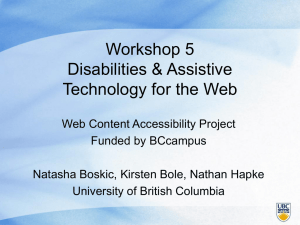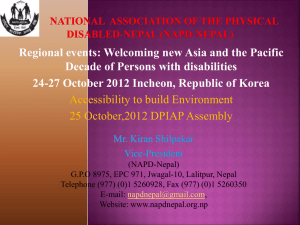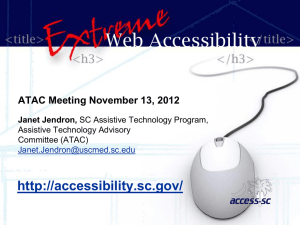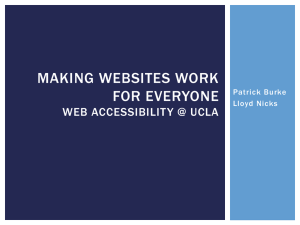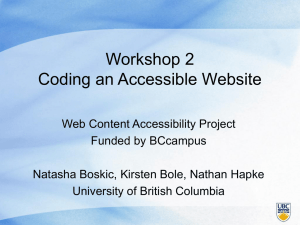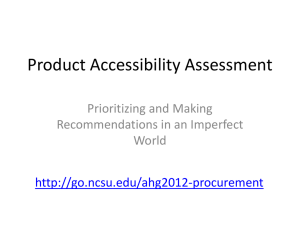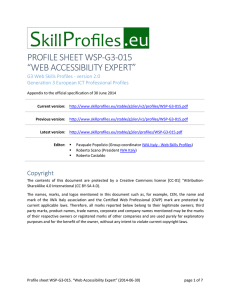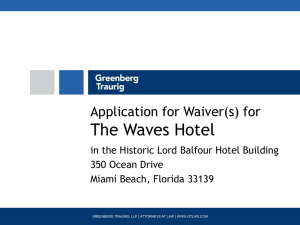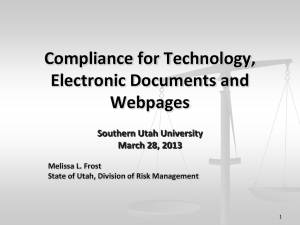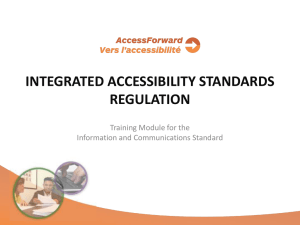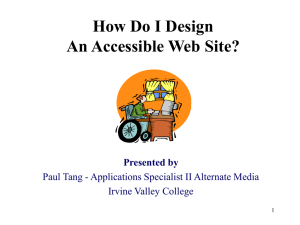Web Accessibility
advertisement
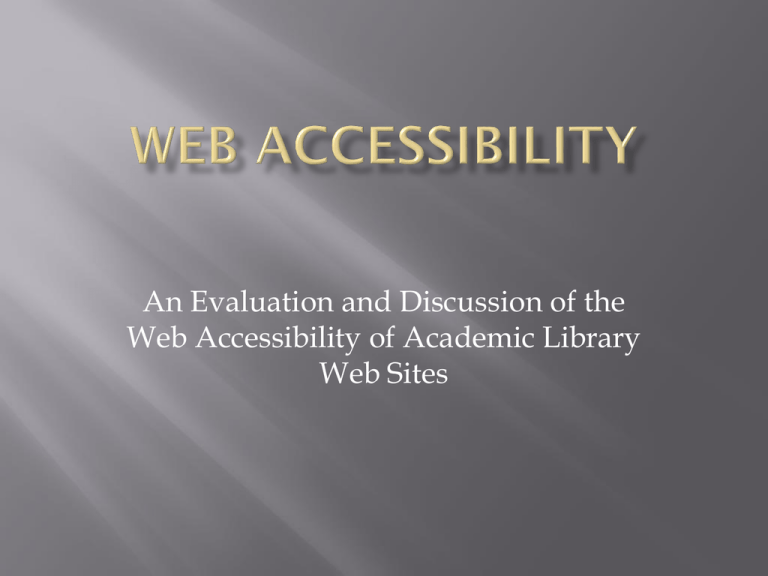
An Evaluation and Discussion of the Web Accessibility of Academic Library Web Sites Dave Comeaux, Web Services Librarian at Tulane University Co-Authored a 2006 research paper studying web site accessibility Finishing up a follow-up study (research conducted in 2010) For this presentation, I analyzed the accessibility of 4-year academic libraries In Louisiana What is Web Accessibility Why it’s Important How Academic Libraries are doing Web accessibility means that people with disabilities can use the Web. More specifically, Web accessibility means that people with disabilities can perceive, understand, navigate, and interact with the Web, and that they can contribute to the Web. (World Wide Web Consortium - http://www.w3.org/WAI/intro/accessibility.php) Web accessibility refers to the inclusive practice of making websites usable by people of all abilities and disabilities. When sites are correctly designed, developed and edited, all users can have equal access to information and functionality. (Wikipedia http://en.wikipedia.org/wiki/Web_accessibility) Visual Blindness, low vision, color-blindness Hearing Deafness Motor Inability to use a mouse, slow response time, limited fine motor control Cognitive Learning disabilities, distractibility, inability to remember or focus on large amounts of information Helps everyone Required by law Helps fulfill the long-standing goal of libraries to provide barrier-free access to everyone Accessible design is universal design Each of the major categories of disabilities requires certain types of adaptations in the design of the web content. Most of the time, these adaptations benefit nearly everyone, not just people with disabilities. For example: Almost everyone benefits from helpful illustrations, properlyorganized content and clear navigation. Similarly, while captions are a necessity for Deaf users, they can be helpful to others, including anyone who views a video without audio. (WebAIM - http://webaim.org/intro/) Sect. 508 (Rehabilitation Act Amendment of 1998) Under Section 508 (29 U.S.C. ‘794 d), agencies must give disabled employees and members of the public access to information that is comparable to access available to others. Section 504 (Rehabilitation Act of 1973) ADA (1990/2008) Title II (public entities) Title III (private entities; places of public accommodations) 2010 Study of 56 North American Libraries Automated accessibility checker: Bobby 3.1.1 W3CWCAG, Priority 1, compliance check. 2010 Study of 56 North American Libraries Automated accessibility checker: Bobby 3.1.1 W3CWCAG, Priority 1, compliance check. 2010 Study of 56 North American Libraries Manual testing for "skip nav" link, a Section 508 requirement (2006 & 2010 only) Additional variables Scope: homepages plus one link-layer down (within the domain) Study size: Methods used for page lay-out (tables v. divs; 2010) CMS (yes or no; 2010) all 56 ALA-accredited SLISs and the main libraries at these institutions (2002, 2006, 2010) Geographic coverage: US and Canada 2011 Study of 22 Louisiana Libraries Web Sites studied: 22 Louisiana 4-year colleges & universities 1. How accessible are the library Web sites? (in terms of the percentage of barrier-free pages) 2. How many library sites use "Skip Navigation" links and does their use correlate with accessibility? 5. How does the method of page layout (tablebased or div-based) correlate with accessibility? 6. Does the use of a Content Management System (CMS) correlate with accessibility? 56 North American Libraries How accessible are the major library Web sites on the campuses with SLIS schools in 2010? Overall, 61% Bobby-approved. 8 were 100% approved. 13 sites were above 90% approved. 11 were between 80% & 90% approved. 6 had no approved pages 7 had less than 10% approved. 22 Louisiana Libraries 1. How accessible are the library Web sites on the Louisiana campuses in 2011? Overall, 57% Bobby-approved. 7 were 100% approved. 4 sites were between 90% and 100% approved. 11 were between 80% & 90% approved. 4 had no approved pages 4 had between 1% and 10% approved. Why have Skip Navigation links? Why have Skip Navigation links? 56 North American Libraries 25 (44.6%) used skip navigation links. 22 Louisiana Libraries • 5 (22.7%) used skip navigation links. North American Library Sites % Approved With Skip Links Without Skip Links 65.92% 56.48% Louisiana Library Sites % Approved With Skip Links Without Skip Links 92.00% 44.92% How does the method of page layout (tablebased or CSS-based) correlate with accessibility? For example: By all measures, these sites exhibited significantly higher accessibility barriers. % Approved (NA) % Approved (LA) * Only one site Table-based CSS-based 42.11% 64.26% 9.00% * 59.24% Does the use of a Content Management System (CMS) correlate with accessibility? What is a Content Management System, anyway? A Content Management System (CMS) is a web-based software application that uses a programming language to assemble web pages from content stored in a database. Pages are built according to a template, which in theory can make accessibility easier 56 North American Libraries • 14 (25%) used a CMS. 22 Louisiana Libraries • 5 (22.3%) use a CMS. Dramatically! % Approved (NA) % Approved (LA) CMS Not CMS 71% 57% 59.83% 49.94% The use of “skip navigation” links are associated with higher accessibility Building your web site with CSS improves accessibility Using a CMS for your web site improves accessibility Contact the Disability Services office at your university to determine how many disabled students, (of each type) you have Explain that you are eager to help ensure that resources are accessible Broaden your accessibility policies to include web accessibility Use a CMS, or at least a CSS-based layout for your next redesign Label all images with a descriptive alt tag (for images that convey information), or a null tag e.g., alt=“”, for images that are merely decorative Web Developer Toolbar Functional Accessibility Evaluator 1.1 http://fae.cita.uiuc.edu/about/
